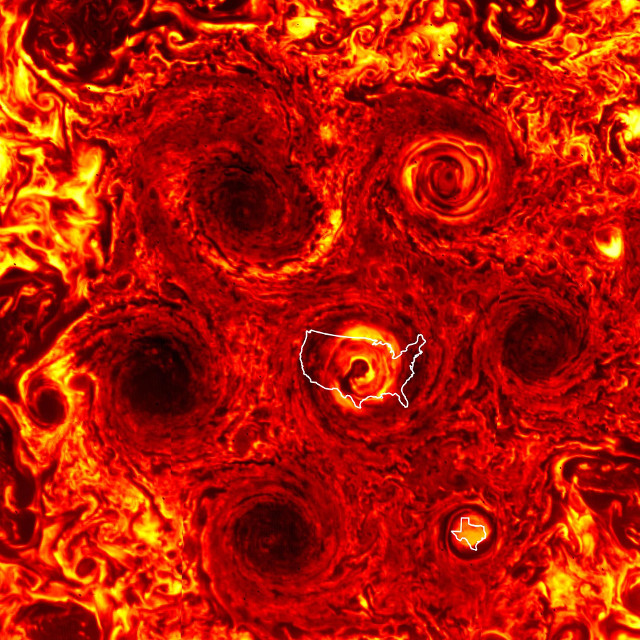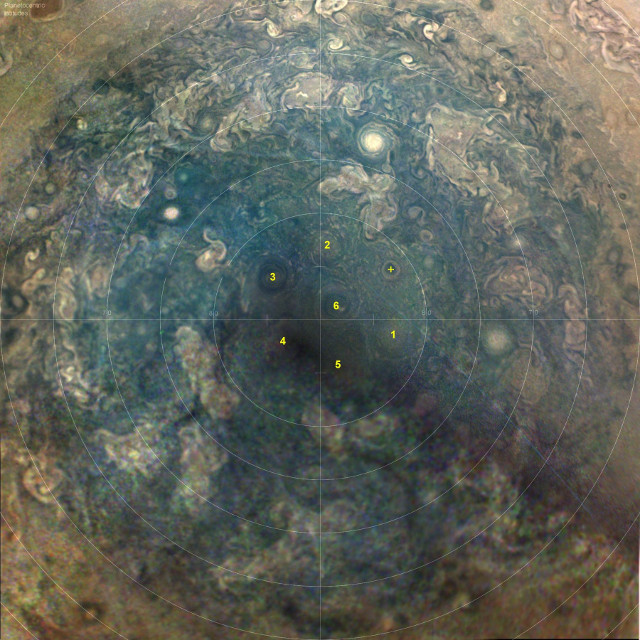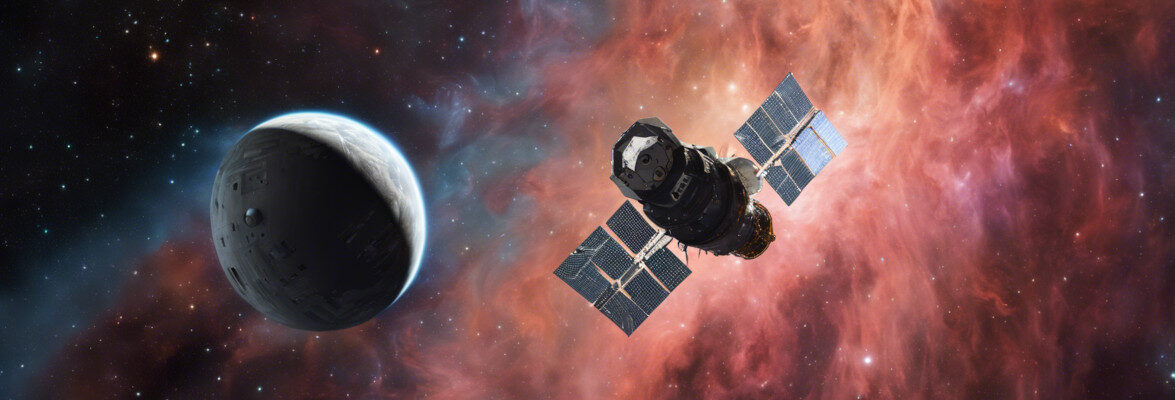
A new cyclone was discovered at the south pole of the planet Jupiter by NASA’s Juno space probe. In particular, it was the JIRAM instrument that captured the first images in which you can see that the configuration of the cyclones existing in that area changed from a pentagon of cyclones surrounding a central one to a hexagon, still around a central one. The new cyclone seems small compared to the ones already existing but its surface is comparable to that of Texas. This discovery was made during a Jupiter flyby that follows a maneuver needed to prevent Juno from ending up in the planet’s shadow for 12 hours. Without being powered by solar panels, its batteries would have completely drained and its temperature would have dropped to lethal levels.
The Juno space probe has been studying the planet Jupiter since it entered its orbit, on July 4, 2016. It’s equipped with huge solar panels that allow its instruments to work even at that distance from the Sun and keep their temperatures high enough to avoid faults. For this reason, its trajectory is studied for it to always keep exposed to the Sun. However, at a certain point its normal trajectory would have taken it into Jupiter’s shadow for 12 hours, a situation compared by NASA to the one that doomed the Mars Rover Opportunity. To avoid that, Juno’s navigation experts resorted to a maneuver out of the ordinary.
On September 30, 2019, the Juno space probe’s reaction control system was used in a way that wasn’t originally intended. A burn lasted about 10.5 hours, five times longer than any previous maneuver carried out with the reaction control system, with the consumption of about 73 kg of fuel. That maneuver allowed Juno to avoid the eclipse and on November 3, 2019 it began its 22nd Jupiter flyby, in this case above its south pole, discovering a new cyclone.
Cyclones have already been studied by the Juno space probe at both Jupiter poles but it wasn’t clear whether they were transient like those on Earth or had at least a very long durantion. At the south pole a formation was examined with five cyclones arranged like a pentagon with another cyclone in the center and seemed stable, with no sign of change. Instead, on November 3, 2019, a new cyclone was discovered that for now is smaller in a formation that is now in the shape of a hexagon.
The JIRAM (Jovian Infrared Auroral Mapper) instrument was supplied by the Italian Space Agency and is operated by the Space Astrophysics and Planetology Institute at the Italian National Institute of Astrophysics. It was the first to capture infrared images of Jupiter’s south pole during the flyby conducted between November 3 and 4 allowing the discovery of the new cyclone. Subsequently, more photos were taken in the visible light by the JunoCam, an instrument included for educational and public outreach purposes that for this very reason made the Juno mission known to non-fans. During the mission, the JunoCam turned out to be useful for scientific activities as well.
The top photo (NASA/JPL-Caltech/SwRI/ASI/INAF/JIRAM) taken by the JIRAM instrument at infrareds shows the cyclones at Jupiter’s south pole with the profile of the USA superimposed on the central cyclone and the profile of Texas superimposed on the new cyclone discovered to give an idea of their size. The bottom photo (NASA/JPL-Caltech/SwRI/MSSS) taken by JunoCam shows the cyclones in visible light.
The data collected by the JIRAM instrument indicate that the winds in the new cyclone average about 360 kph, comparable to those of the neighboring cyclones. This discovery is very useful to understand the processes taking place at Jupiter’s south pole and more. The study of the processes in progress on Jupiter helps to understand the ones in progress in the other gas giant planets. The models that describe these processes are also useful to meteorologists in the study of the processes taking place in the Earth’s atmosphere.



Permalink